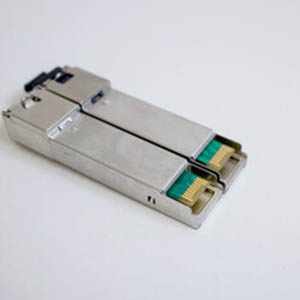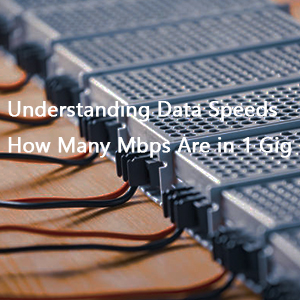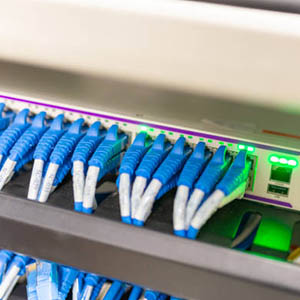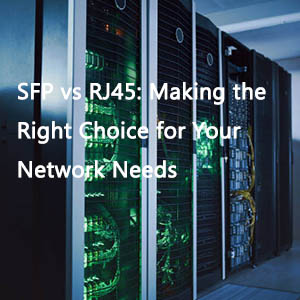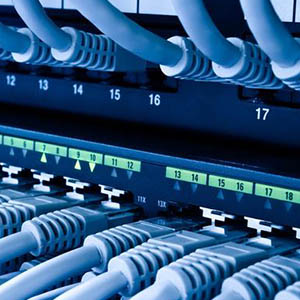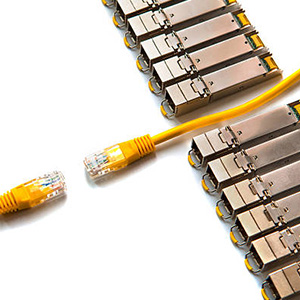Transceivers such as SFP, SFP+, and QSFP play a crucial role in connecting network devices like switches to copper or fiber cables. Primarily used for adding fiber ports, the choice of SFP transceiver hinges on factors like cable type, application, required optical range, and desired data transmission rate.
What is an SFP?
An SFP, or Small Form-Factor Pluggable, is a compact, hot-swappable transceiver designed to support communication standards like 100/1000Mbps Ethernet, Fibre Channel, and SONET. With support for speeds up to 4.25Gbps, SFP transceivers are a staple in telecommunications and data communications. Commonly found in Ethernet switches, routers, NIC cards, and firewalls, SFPs are based on the IEEE802.3 and SFF-8472 standards.
SFP vs SFP+
While SFP and SFP+ transceivers are nearly identical in size and appearance, SFP+ is an enhanced version that supports higher speeds, reaching up to 10Gbps. This increased data rate also impacts transmission distance, with SFP typically offering a longer reach. SFP+ specifications adhere to the SFF-8431 standard. Regarding compatibility, SFP+ ports can often accommodate SFP optics, but at a reduced speed of 1Gbps. However, it’s important to note that an SFP+ transceiver cannot be plugged into an SFP port, as SFP+ does not support speeds below 1Gbps.

GBIC vs SFP
Before the advent of SFP and SFP+, Gigabit Interface Converters (GBICs) were the standard. SFP, sometimes referred to as mini-GBIC, has since replaced GBIC due to its more compact size.
What is a QSFP Port?
QSFP, or Quad Small Form-Factor Pluggable, is another compact, hot-swappable transceiver type. It supports various communication standards including Ethernet, Fiber Channel, InfiniBand, and SONET/SDH, with multiple data rate options. QSFP modules are available in several configurations, such as 4x1Gbps QSFP, 4x10Gbps QSFP+, and 4x28Gbps QSFP28.
QSFP+ and QSFP28 represent the latest iterations, catering to numerous 40Gbps and 100Gbps applications. Both types integrate four transmit and four receiver channels. QSFP+ supports either 4x10Gbps or 1x40Gbps, while QSFP28 can handle 4x25Gbps, 2x50Gbps, or 1x100Gbps, depending on the specific transceiver. QSFP specifications are based on the SFF-8436 standard.
How to Choose SFP Transceivers?
Beyond the SFP vs SFP+ vs QSFP debate, consider the application. SFP transceivers come in various types for different uses, such as single-mode vs multimode SFP. Single-mode SFP transceivers are designed for single-mode fiber, while multimode SFPs are compatible with multimode fiber. There are also long-reach WDM SFP transceivers for multiplexing, simplex SFPs for single fiber applications, video SFP transceivers for high-definition video transmission, and PON SFP transceivers for fiber-based access networks. SFPs are available in both commercial and extended operating temperature ranges, with options for extended diagnostics capabilities.
SFP Compatibility
The SFP Multi-Source Agreement outlines the specifications for small form-factor pluggable devices, allowing for interoperability among components from different vendors. However, some IT equipment manufacturers may only support vendor-specific SFPs. To ensure compatibility, consult the vendor’s optics testing center or request verification from your vendor.
Need Guidance?
If you’re seeking advice on selecting the right transceivers for your network, reach out to Fiber-Life for expert guidance on SFP, SFP+, and QSFP options.

